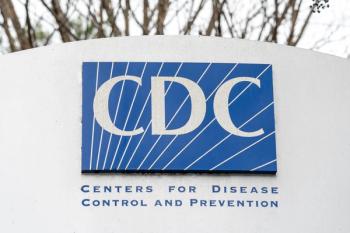
FDA to Evaluate Merck’s Doravirine, Islatravir Regimen for HIV-1
The FDA set a Prescription Drug User Fee Act (PDUFA) date of April 28, 2026.
The FDA has accepted for review a New Drug Application (NDA) for doravirine/islatravir for adult patients with HIV-1 infection that is virologically suppressed on antiretroviral therapy, Merck announced in a release.1 The FDA set a Prescription Drug User Fee Act (PDUFA) date of April 28, 2026.
The NDA was based on data from 2 phase 3 trials, MK-8591A-051 (
“Despite the availability of multiple daily antiretroviral therapies, the needs of people living with HIV are evolving,” Chloe Orkin, dean for Healthcare Transformation at Queen Mary University of London, said in a release.2 “Many people living with HIV are older and also managing comorbidities, making it important to have daily treatment options that can help meet each person’s unique health needs. I’m excited to see that doravirine/islatravir has potential as a new daily treatment option for people living with HIV who may benefit from this 2-drug regimen.”
MK-8591A-051 is a randomized, active-controlled, open-label phase 3 study evaluating the safety, tolerability, and antiretroviral activity of a switch to doravirine/islatravir compared with continued baseline antiretroviral therapy. The study included 553 adult patients who are HIV-1 positive with plasma HIV-1 RNA less than 50 copies/mL at screening.
The study showed that 1.4% of patients who received doravirine/islatravir had a viral load of 50 or greater copies/mL at week 48, compared to 4.9% on baseline antiretroviral therapy. The study also showed that 95.6% of patients who switched to doravirine/islatravir at week 48 maintained viral suppression compared to 91.9% of participants who continued baseline antiretroviral therapy.2
MK-8591A-052 is a randomized, active-controlled, double-blind phase 3 study evaluating the safety, tolerability, and antiretroviral activity of a switch to doravirine/islatravir compared to continued bictegravir/emtricitabine/tenofovir alafenamide. The study included 514 patients who are HIV-1 positive with plasma HIV-1 RNA less than 50 copies/mL.
The study found that 1.5% of patients who switched to doravirine/islatravir had a viral load of 50 or greater copies/mL at week 48, compared to 0.6% on bictegravir/emtricitabine/tenofovir alafenamide. The study also found that 91.5% of patients who switched to doravirine/islatravir maintained viral suppression compared to 94.2% of patients who continued receiving bictegravir/emtricitabine/tenofovir alafenamide.2
The safety profile of doravirine/islatravir was generally comparable to the comparator antiretroviral regimens and bictegravir/emtricitabine/tenofovir alafenamide across both studies. There was no treatment-emergent resistance to either doravirine or islatravir during the trials.
“Merck has been at the forefront of HIV research for more than 35 years and we are pleased to continue our work to innovate and deliver new options that aim to meet the needs of the HIV community,” Eliav Barr, senior vice president, head of global clinical development and chief medical officer at Merck Research Laboratories, said in a release.1 “The health needs of people living with HIV often change over time—whether it’s managing comorbidities or navigating complex medication regimens. We believe doravirine/islatravir, if approved, will represent an important new complete regimen option designed to help meet their diverse needs.”
READ MORE:
Pharmacy practice is always changing. Stay ahead of the curve: Sign up for our
References
1. U.S. FDA Accepts New Drug Application for Merck’s Doravirine/Islatravir, an Investigational, Once-Daily, Oral, Two-Drug Regimen for Treatment of Adults with Virologically Suppressed HIV-1 Infection. News Release. Merck. July 10, 2025. Accessed July 10, 2025. https://www.merck.com/news/u-s-fda-accepts-new-drug-application-for-mercks-doravirine-islatravir-an-investigational-once-daily-oral-two-drug-regimen-for-treatment-of-adults-with-virologically-suppressed-hiv-1-infe/
2. Merck Announces Positive Data from Phase 3 Trials that Show the Investigational, Once-Daily, Oral, Two-Drug Regimen of Doravirine/Islatravir (DOR/ISL) Maintained HIV-1 Viral Suppression at Week 48. News Release. Merck. March 12, 2025. Accessed July 10, 2025. https://www.merck.com/news/merck-announces-positive-data-from-phase-3-trials-that-show-the-investigational-once-daily-oral-two-drug-regimen-of-doravirine-islatravir-dor-isl-maintained-hiv-1-viral-suppression-at-week-48/#:~:text=March%2012%2C%202025%2012:26%20pm%20ET.%20DOR/ISL,to%20comparator%20antiretroviral%20therapies%20in%20adults%20with
Newsletter
Pharmacy practice is always changing. Stay ahead of the curve with the Drug Topics newsletter and get the latest drug information, industry trends, and patient care tips.






































































































































